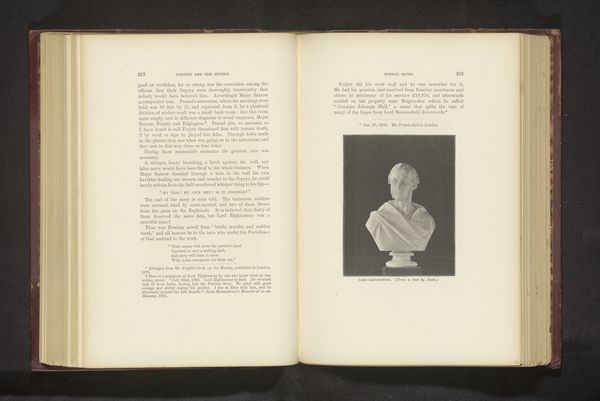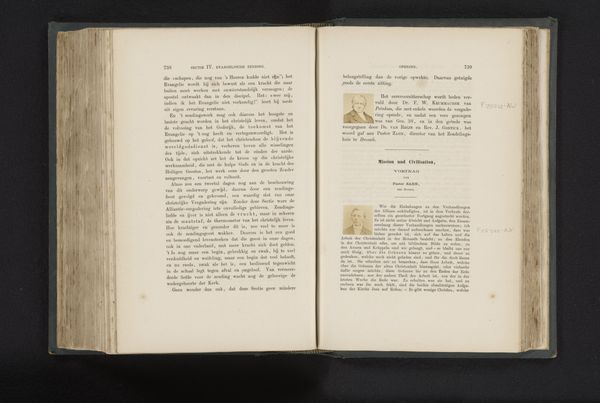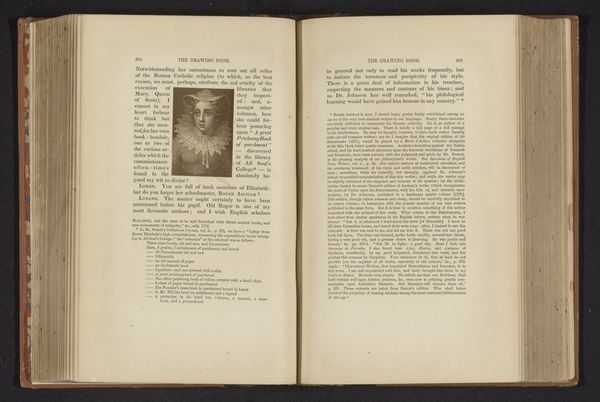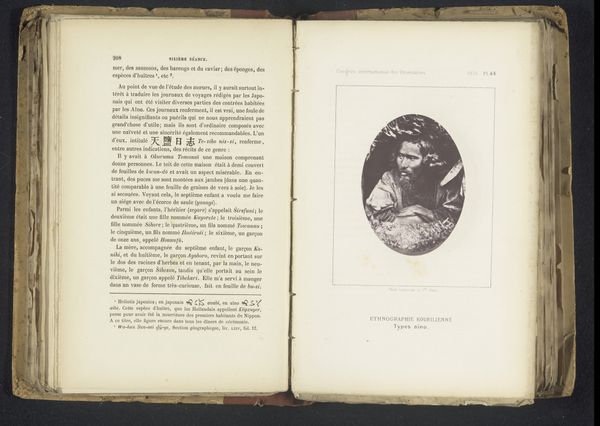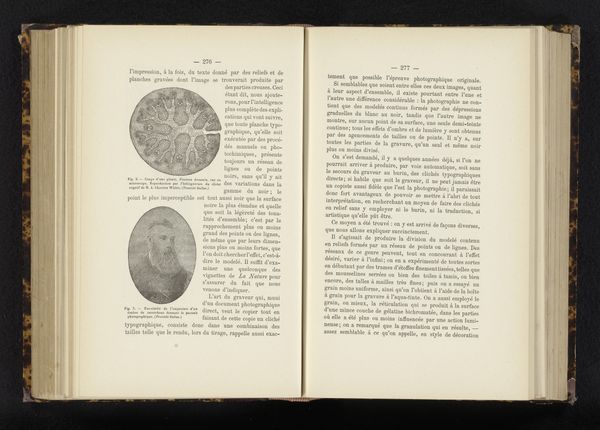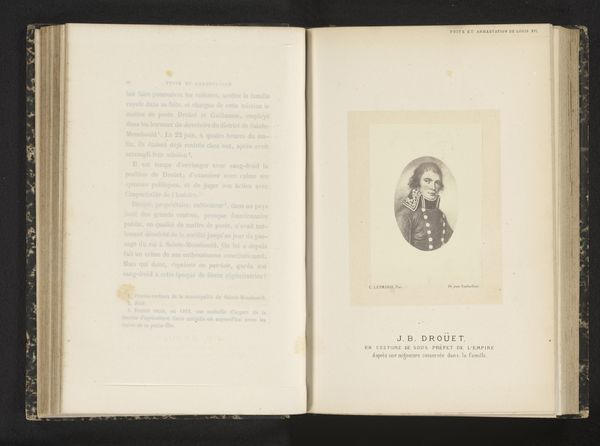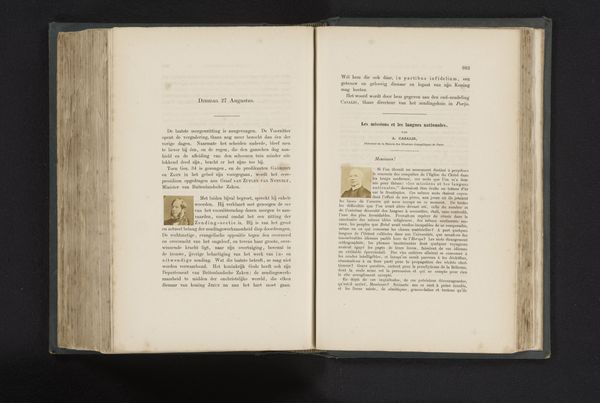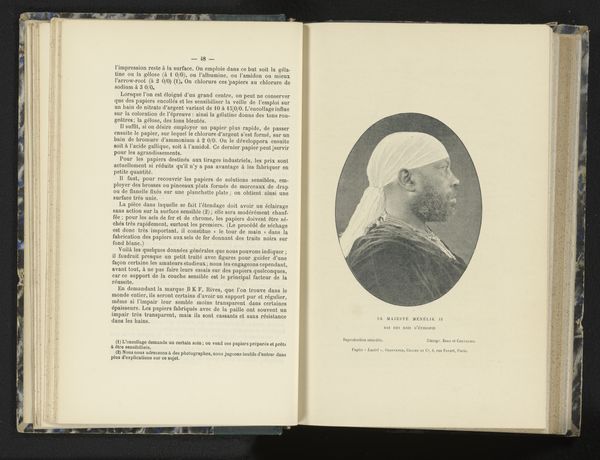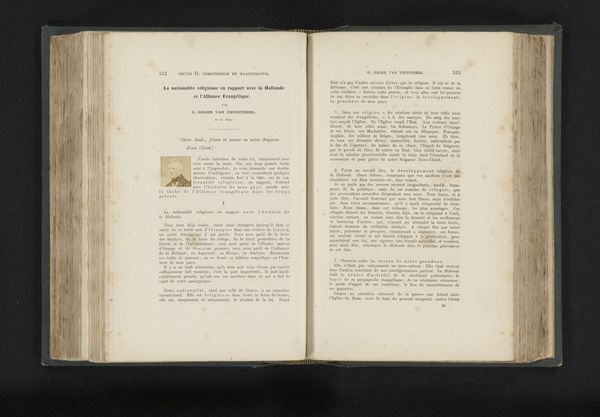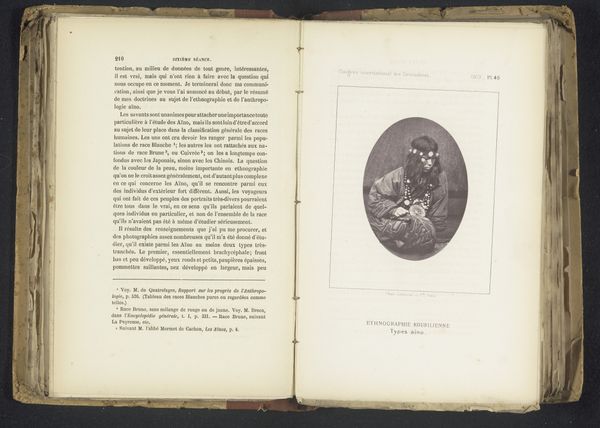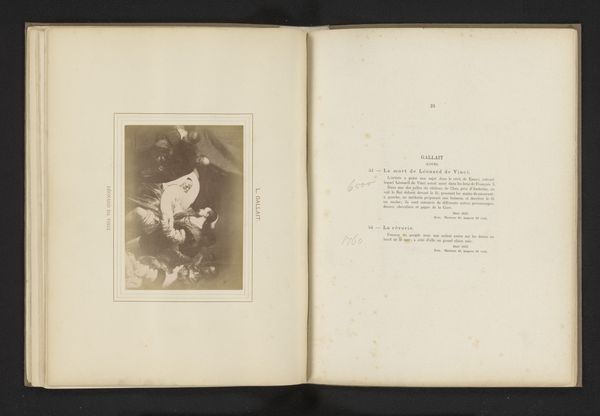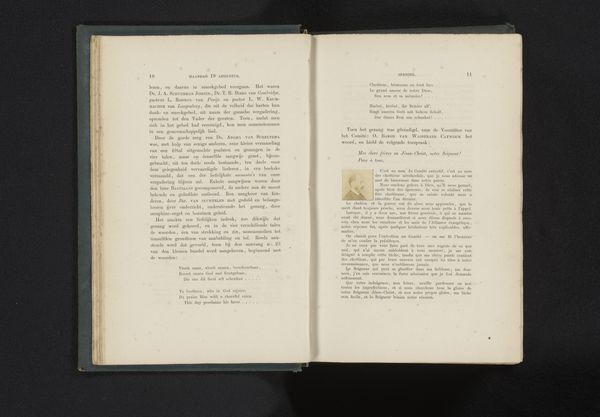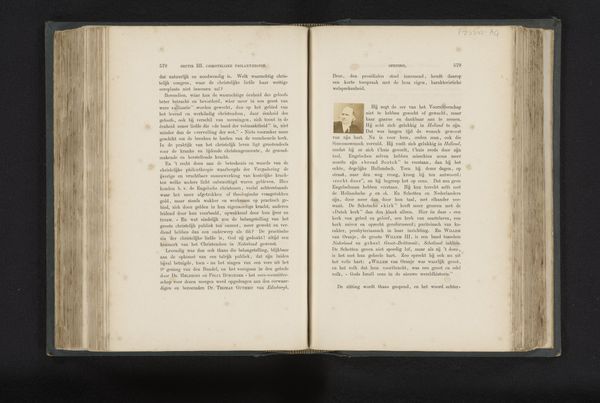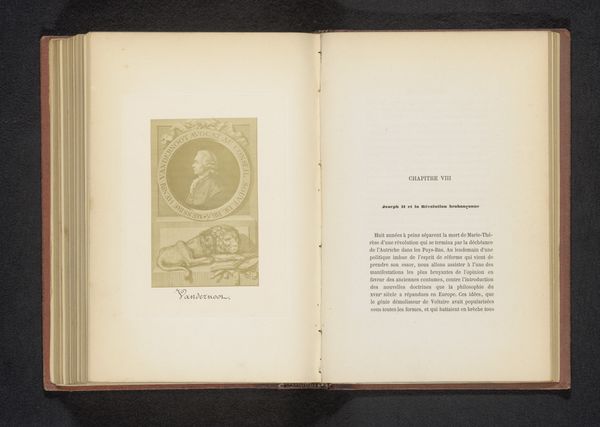
print, photography
#
portrait
#
paper non-digital material
# print
#
photography
#
history-painting
#
historical font
Dimensions: height 78 mm, width 55 mm
Copyright: Rijks Museum: Open Domain
Curator: Looking at this open book, we see a photograph, a print of Mary Aikenhead, dating roughly from 1869 to 1879. It's presented almost as an historical artifact within the context of these bound pages. The photographic process itself intrigues me. Editor: It strikes me as rather austere, even melancholy. The oval frame confines her, and the sepia tone adds to that feeling. There's a real sense of quiet determination in her eyes, which are striking for their forward, strong, assertive, and powerful look. Curator: The placement within the book adds another layer. This is clearly a considered presentation of her image. Someone has carefully placed the photographic print on this page, surrounded by text; there's also visible typesetting used for the caption, and it all underscores a reverence. I want to think about the materials themselves, the photographic emulsion, the printing process of the text, the paper, all in relation to the labor that produced it and to her story. Editor: Exactly. We must look into who produced this book and who commissioned this portrait, and understand the social environment of its making, how her image circulated, and the narratives attached to it. This portrait is an archive into which we can analyze both Mary Aikenhead, her role in the Sister of Charity, and how her work challenged gender roles of the era in the face of dire poverty and social inequality. We could interpret the quiet power in her gaze as symbolic resistance. Curator: I agree that uncovering those narratives are imperative. Consider how this print was disseminated - was it broadly available, or intended for a specific audience? The material and placement also suggest it could be about constructing her legacy, even solidifying her saintly image within a historical and, might I add, material narrative. Editor: Absolutely, there's something profoundly empowering about re-contextualizing figures like Mary Aikenhead within modern intersectional frameworks, particularly within discussions surrounding gender, labor, and faith. It enriches our engagement and appreciation of not just art history, but also cultural histories too. Curator: Seeing this photograph nestled in this bound context sparks a lot of questions about its life cycle, about the materials, the hands that made it, about who saw it, who it spoke to— Editor: And of the historical, lasting social impact it encapsulates!
Comments
No comments
Be the first to comment and join the conversation on the ultimate creative platform.
